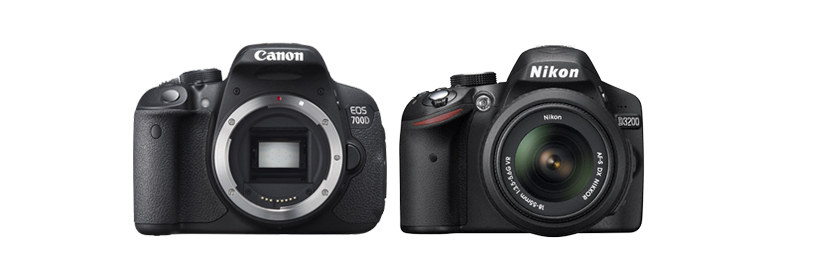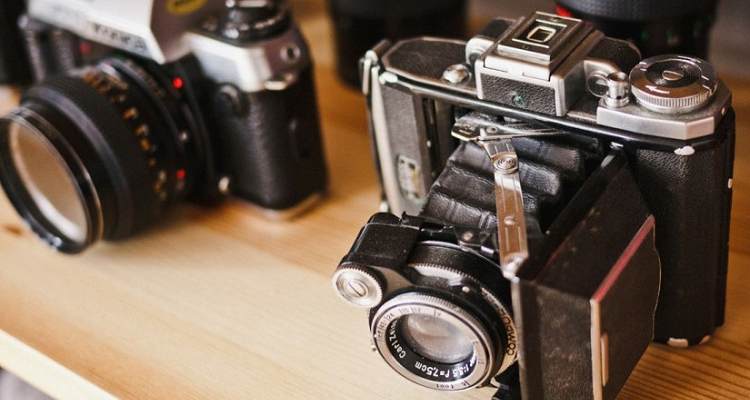You don’t have to be a professional photographer to take a decent photograph — but a good product image requires more than just aiming and shooting!
When you’re photographing items to sell online, you want to produce the best results possible. A great product photo will make your store look professional and show that you pay close attention to detail. No one wants sloppy presentation, right.
Three key factors to take into consideration are aperture, ISO sensitivity and shutter speed.
Let’s go over each of these in detail in this installment of our product photography tips.
Aperture
We’ll start off these product photography tips with the aperture, which is the hole within a lens that determines the amount of light that travels into the camera.
The size of the opening is measured in f-stops. The smaller the number, the larger the aperture. Your aperture is directly linked to your depth of field, which is basically what determines the area of the photo that is in focus.
The larger the aperture, the shallower the depth of field. A small f-number will isolate your foreground from the background, making the product very sharp and in focus and the background blurry. A large f-number will clearly capture everything in the frame.

If you’re unfamiliar with some of the terms above, just go with an aperture between f/4.5 to f/7.1. This is a good range to use if you’re not as confident with adjusting camera settings because the range will help isolate the subject by blurring the background. At the same time it will still give you that sharpness and detail that is so important in product photography.
In situations where you are unable to work with a plain background and you want to isolate the subject from its background or surrounding elements, a wide aperture (say, f/2.8 or lower) will help blur everything that is not within the area you chose to focus on.
I should add that not all cameras are capable of going as low as f/2.8, so go as low as you can or just use a plain background. Remember that your focus is on capturing your product in the best way possible and not just on taking a great photo.
If the numbers are confusing to you, just think of it this way: the lower the number (e.g., f/2.8), the smaller the area that will be in focus. The higher the number (e.g., f/22), the bigger the area that will be in focus.
As I said before, the aperture refers to the amount of light that’s let in to your camera, so not only does it impact the depth of field but changing it will impact the brightness of the photo. If you take a photo and want to change what’s in focus with the same level of brightness, you will also have to adjust your shutter speed and ISO.
If you look at the image below, you’ll notice the photo becomes increasingly dark as the f-stop number goes from f/2.8 to f/11; the photo gets darker as the cup gets clearer. As your f-number increases, the opening gets smaller and less light passes through to the camera’s image sensor.
To compensate, you must choose a slower shutter speed, increase your ISO or do a combination of both to maintain the same brightness level whilst adjusting the area of focus.
ISO
The ISO is how sensitive your camera is to light. The ISO rating can go as low as 25 or as high as 204,800. The lower the number, the less sensitive the image sensor is to light.
When working with direct natural light, you can probably get away with ISO 200-800. Higher ISO ratings will help bump up your shutter speed and compensate for wider apertures (such as f/5.6 and higher).
If you are shooting at ISO 200 at 1/60, for example, ISO 800 will allow you to use 1/100 with a similar exposure (brightness level) on your image. For best results, use the lowest ISO rating possible as higher ISO ratings will produce grainy images.
You should use a tripod for reducing camera shake especially when shooting product images, but should there be a time when you have no other options for steadying your camera (such as a table or any other stable surface), you may increase your camera’s ISO sensitivity to compensate for the low shutter speed. This will also help in low-light situations if you find your image too dark.
With optimal lighting conditions, ISO 50-400 should be fine during the day until around 4 p.m. After 4 p.m., your lighting may require you to use ISO 800 and above to compensate for the lack of daylight. Of course if you’re using artificial light, your ISO requirements will change as well.
Shutter speed
The shutter speed indicates the speed at which the curtain opens and closes. Each shutter speed value is represented in ‘stops’ of light as well, measured in fractions of a second.
Ideally, you want to use the fastest shutter speed your lighting will permit. f you want to eliminate camera shake when shooting handheld, opt for a shutter speed of 1/125 or higher to ensure your image is sharp. If you’re working with flash, use at least 1/60.








